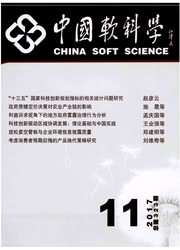

 中文摘要:
中文摘要:
为了评估我国区域性能源强度指标对各区域经济发展的影响,本文基于区域间投入产出模型,预测在能源强度指标约束下,“十二五”期间各区域结构调整的走向和经济增长率。结果显示:由于“十二五”期间技术进步只能使能源强度降低11%左右,各区域需要通过结构调整来实现各自的节能目标;节能政策将对能源基地型和中等能耗型区域经济发展的约束力较大,其在承接产业转移时面临较大的节能压力;但政策对都市消费型和低能耗型区域的约束较小,这类区域通过推动产业转移和大力发展第三产业,可以在保证经济中速增长的同时实现节能目标。这一模拟结果与国家发改委公布的情况相一致。因此,我国未来的经济发展面临着区域公平与节能减排效率之间的矛盾,政策制定时应考虑平衡这对矛盾。
 英文摘要:
英文摘要:
In the 12th Five Year Plan ( FYP,2011 - 2015 ) of China, a national target is set for a 16% reduction in energy intensity(EI) ,which is defined as energy consumption per GDP. Different targets are also assigned to all provinces by the State Council in 2011. In order to assess the influences of such a policy on different regions, this study tried to predict the future trend of regional development and structural shift, as well as possible change in regional economic development pattern. The results indicate that technical progress is supposed to lead to an 11% reduction in national energy intensity in the 12th FYP,which is not sufficient to achieve the target. The energy intensity reduction target for each province will set no constraints on the economic growth of urban-consumer and low-energy-intensity regions, but will affect the energy- base and medium-energy-intensity regions, because the pressure of energy saving will be transferred from eastern region to central and western regions with industrial transfer. The results are consistent with an evaluation for the implement ofthe energy-saving policies in each province, which is made by Chinese National Development and Reform Commis- sion. This study indicates that there is a contradiction between regional equity and energy-saving efficiency, important for policy makers.
 同期刊论文项目
同期刊论文项目
 同项目期刊论文
同项目期刊论文
 期刊信息
期刊信息
